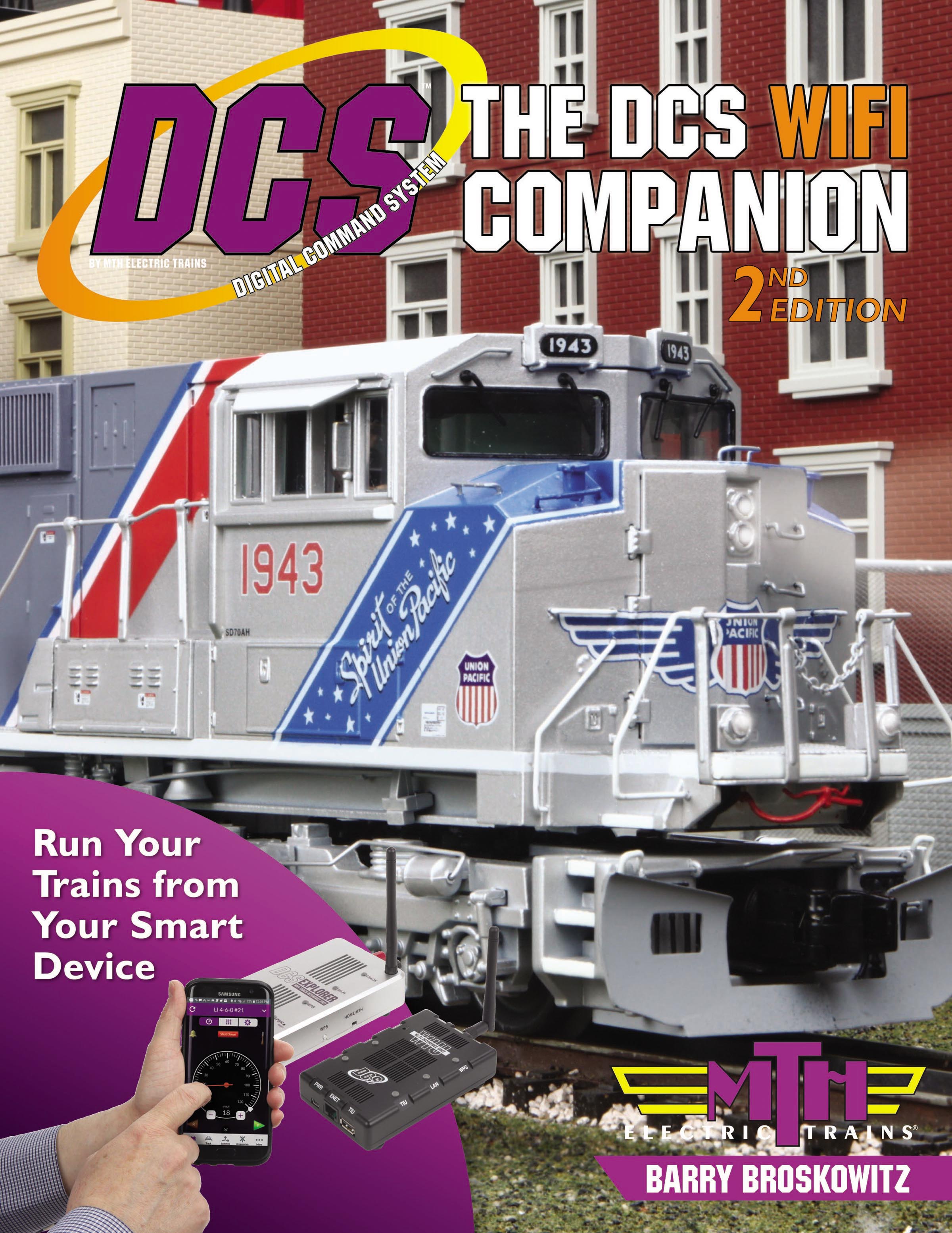One question was about what is powering my switches. The track. By virtue of the track being its own conductor of electricity, the track is powering itself. I hooked this up like my old 1971 DT&I Yardmaster. One CTC lock on, two ultra thin wires, one transformer, 10 track pieces sending electricity through the rails in a circle. I understand perfectly, the longer the stretch of track, straights, curves, and now switch track, the weaker the power gets the further away from the home connection you get. On this layout, I took a brick. Not sure what its given name is, but a 180 watt brick, plugged it into the wall. I took some wire cutters. Cut the funky looking end off the wire that Lionel thought would be going to its legacy system, which it was designed to plug into. Split the wires down the middle making two wires, one with writing on it, the other without. The one with writing on it, as I was told, is the "red" wire. Process of elimination, the other wire in this picture is the "black" wire. I exposed the copper wire under the rubber cover, attached each wire to its own banana connector, then plugged said wire into the back of the TIU into the Fixed IN 1 port.
Now I have power going from the wall to the TIU through a brick that I can turn on or off respectively. To hook up the track, I simply took some 16 gauge wire, snaked it under and through my cabinet to the Fixed OUT 1 port. Red to Red, Black to Black. At the opposite end of this I took the same two 16 gauge wires and hooked them to a terminal block board I just bought from MTH. I hooked those wire to the BIG black and red connection points on the board. I took two more wires, 16 gauge, and connected those respectively to the red and black screws on port 1 then ran the other end of those wires out to one piece of 10 inch straight track the way everyone else does it.
Now I have power coming from the breaker box, to the receptacle, through the brick's power cord into the brick. From there it leaves the brick, I assume at the same strength it was when it got there, and through the 16 gauge wire I used to hook the brick to the TIU, the power goes into the TIU, still cooking with gas, and leaves the TIU, again through 16 gauge wire, still cooking at the same flame level as it was when it left the breaker box, and finally, it reaches the 10 inch piece of track, and fans out left and right throughout the connected pieces of track that run from both the right end and the left end of the terminal piece, as it is called. I understand that as it travels to the right and left it gets weaker and weaker as more track comes into play.
My switch tracks are not powered by anything other than the track in front of them, and the track behind them in the sequence. Connect all the pieces on track one, you have a complete sequence. Branch off of a switch onto track two, starts a new track, but is part of the same sequence. Complete that oval, branch off another switch, new oval but same sequence. Once that oval is fully connected, now you use more switch track to branch off that oval to individual straightaways I use for off track parking. 5 straightaways, but still part of the same sequence of electricity that started back on track one at the 10 inch piece I have spoken so fondly of.
I'm sorry to sound frustrated or seem as if I am getting ****ed off about this, I'm not, but this is the best I can do to explain how my track is wired. I am letting the natural design of the track pieces power themselves. Think Christmas lights. One strand, 50 bulbs, plug the strand into a wall outlet and you get 50 lit lights. Each light is powered by virtue of being part of that strand. That's how all of my ovals are powered. One 10 inch track piece, we will call him Atlas, is powering my entire layout. Now that we have that out of the way.
I plan to run more wire to various parts of the layout using that terminal block I just bought. I figure if I can't boost the power output using 11 off shoot wire connections all hooked to the same terminal block, then screw it, I'll just live with whatever poltergeists I am forced to live with. As for the Lionel portion of this DCS odyssey, you have to have a Base1L box if you don't want to spend the dough it takes to have two systems hooked to one track and two remotes, that's.....not the most efficient way to do things in my book. One system, one remote, live with the quirks, have fun, forget the advanced stuff, learn what you can when you can find time to learn it, but make sure your track is working before you get involved with the ins and outs of the propulsion system. I had one good switch just today go south on me. Light works, switch quit. For some **** reason a car derailed, sparks flew, and now I have a working lamp light but no remote switch. I also discovered that curve arc isn't a guideline it's a rule. Engine made it just fine but the arc was too steep for the coupler bend. The coupler flew way out but the reefer it was hooked too couldn't swing that far and off she went.
Had one person tell me if I learned anything new about "engine not on track" let him know. You were right, dial up the whiz wheel, sucker starts fine, off you go.
My track signal runs from 10 at the terminal piece, down to 3 on the far back straight stretch on the outer track. Hopefully my jumper wires strategically placed about the ovals will help that.
As for plugging stuff in, I have what I have and that's all I have. 11 outlets all wired in a daisy chain hooked to a 20 amp breaker, and the only thing plugged in besides The Brick, the transformer for my grandson's track and the Base 1, is a wall clock at the entry door.
I can't thank all of you enough for what you are doing. I appreciate all of your advice and helpful hints. I wish I could show you what I have laid out and maybe if I can get back far enough I can send you a picture. If not for wiring help, to show it off, I am proud of what I have gotten done so far.
John





